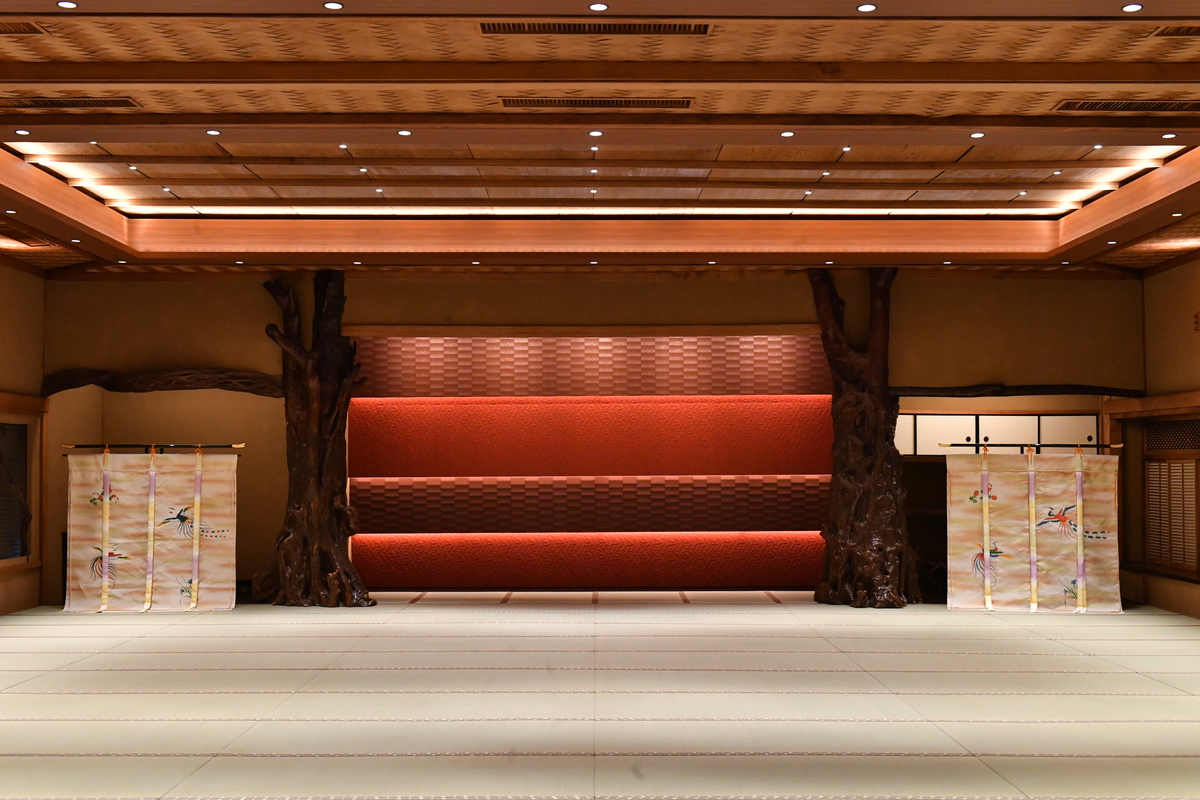The hall has been renewed.

The hall has many features that cannot be obtained or made today. The floor pillars are made of yakusugi cedar and the ceiling is made of a single piece of yakusugi cedar with an ajiro ceiling. We have kept these unique features and renewed the design in line with contemporary culture while making more use of them than ever before.
Going up to the step in the alcove accentuated the sense of superiority, and there was also a sense of discomfort due to the culture of not going up to the alcove, which is basically the same as not going up. The steps were removed and the alcove was built to make the most of the whooping-ceiling floor pillars. The alcove used to be entirely earthen, and hanging scrolls were essential, but by installing natural wood, which also makes a wonderful backdrop for the bride and groom, the design will be reborn as a contemporary design that is not concerned with hanging scrolls. The ceiling is made inconspicuous by embedding light fixtures, and lights are directed toward the ceiling from the side to highlight designs such as the Ajiro and create an ambience in the room.

About tokonoma wall design
In order to make the most of the old and unchanged things in the Tsukiji Jisaku building, while making it more attractive, we used traditional Japanese techniques and wood to create something new and uncomfortable. First, a design board is set up by painting "Bengara," an ancient Japanese color dye, on a "Naguri" board. This allows for the elimination of the hanging scrolls that were previously a must, and allows for greater freedom in the arrangement of flowers and plants.
"NAGURI MACHINING."NAGURI" is an indispensable technique for gate and sukiya (tea-ceremony house) architecture. It leaves traces of tools on the surface of logs and planks, which is regarded as a taste. It is said that Sen no Rikyu began to use this technique, which was originally used to prepare materials, as a design technique.

"Bengara."Bengara is an ingredient (iron oxide) extracted from soil, and is also called benigara (red shell) or bengara (petri dish), a name that comes from its origin in the Bengal region of India. Bengara is a material that has taken root in Japanese life since ancient times, and has been used in pottery and lacquerware, as well as in the application of bengara coating to houses for its function of insect repellency and antiseptic properties.

![Tsukiji Jisaku [Official] Ryotei Famous Mizutaki -Official direct reservation special offer-.](https://jisaku.co.jp/wp-content/uploads/2025/01/header-logo.png)
